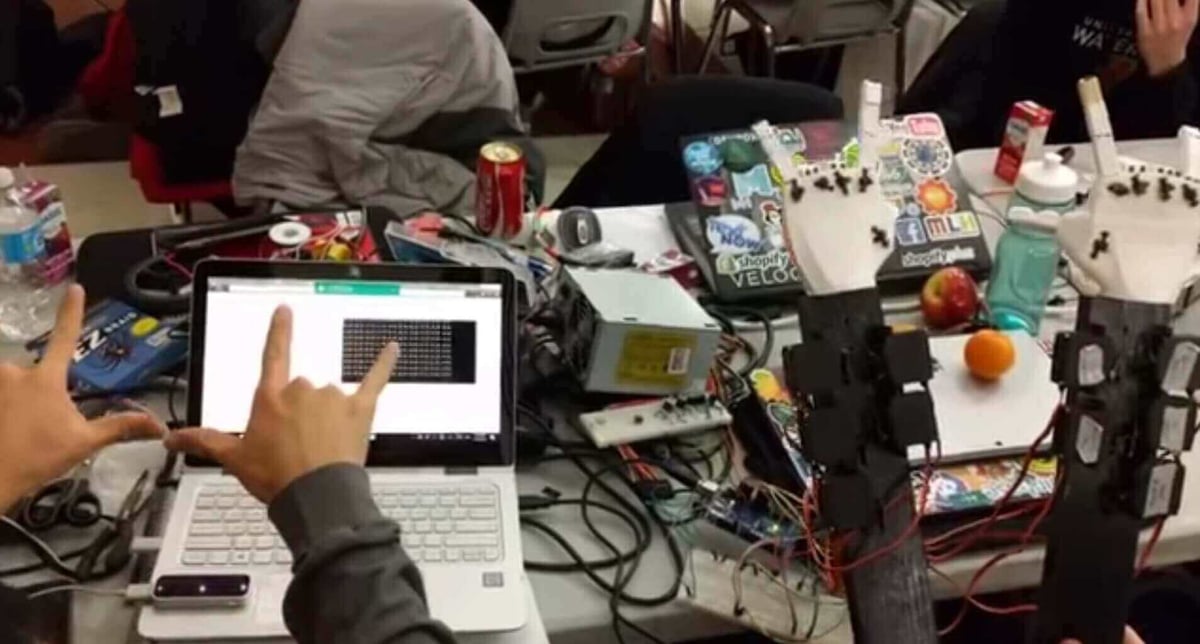Built in a 24 hour hackathon, the SignBot is a 3D printed animatronic device that can listen to speech and convert it into sign language.
The SignBot is an automaton that can hear what a person says and then translate it into sign language. Raise your hands if you think this is clever.
The device is housed in a special box featuring a pair of 3D printed hands, and technologies like Arduino and Leap Motion. A team of Makers put it together over the course of a 24 hour hackathon called McHacks, held at McGill University in Montreal, Québec.
Alex Foley, Clive Chan, Colin Daly and Wilson Wu are the enterprising folks responsible; they wanted to make a tool to help with translation between oral and sign languages. The result is an animatronic device that listens to speech via a computer interface, and then translates it into physical sign language.
The centrepiece of the SignBot are the 3D printed hands, which are controlled by servos and pulleys. On the day of the hackathon, the team experienced a minor setback when they realized they had two left hands. They quickly whipped up another one!
In addition to speech translation, the SignBot can also detect hand motions using Leap Motion’s API; this means it can also mirror individual hand gestures.
Such an incredible innovation can’t go unrewarded. The SignBot is one of 15 winners out of 97 submissions at McHacks.
SignBot could Revolutionize Sign Language Education
The inspiration for the SignBot is the rapid progress that modern technology has made in translation between different languages.
However, according to Foley, there is one glaring omission — sign language.
“Seeing the lack of support for translation between oral and signed languages, Clive Chan, Colin Daly, Wilson Wu, and I decided to do something about it. We spent a weekend at McHacks, a 24-hour hackathon held at McGill University in Montreal, Québec, building a project we felt would aid in sign language communication.”
There’s plenty of folks would appreciate the support. According to the World Federation of the Deaf, there are around 70 million people worldwide whose first language is sign language. Gallaudet University estimates anywhere from 500 000 to two million ASL speakers in the US alone. This is a large group of people.
Now that the team has a working proof of concept, the next stage is to create a smaller scale SignBot. The benefit is to make it more suitable for use in a domestic environment (while also reducing production costs).
Another goal is to train the SignBot to handle an increased vocabulary and different accents. Yes, it’s also possible to have an accent in sign language. Visit the project page on DevPost for more details.

License: The text of "Animatronic SignBot Converts Speech into Sign Language" by All3DP is licensed under a Creative Commons Attribution 4.0 International License.